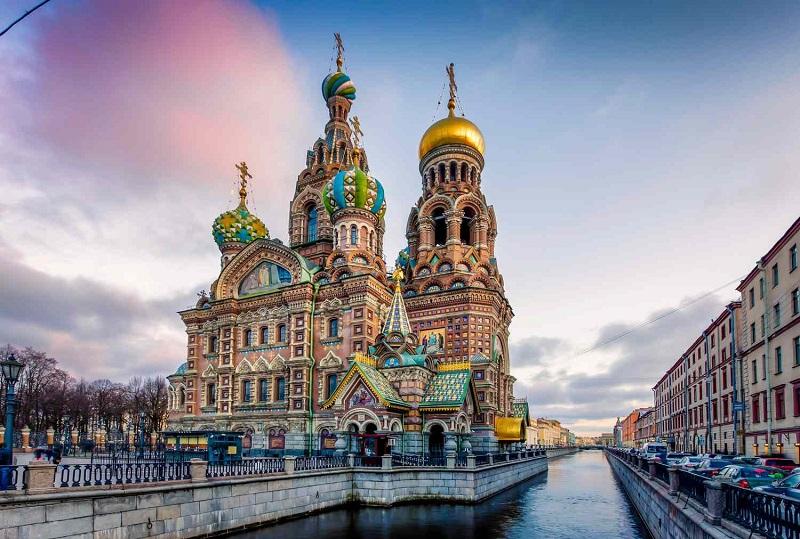At the core of Russian history and culture lies Saint Petersburg, a city that holds immense significance. Established in the 18th Century, it is the second-largest city in Russia, surpassed only by Moscow.
For two centuries, it served as the principal hub of the Russian Empire. Saint Petersburg stands proudly among the world’s prominent cities, a treasure trove of attractions and captivating experiences.
This city is a mesmerizing blend of canals, resplendent imperial palaces, majestic rivers, museums, and enchanting white nights during the summer when the sun never sets. Recognizing its cultural and historical value, Saint Petersburg was designated as a UNESCO World Heritage Site in 1990. Its architecture exudes grandeur and excitement, captivating visitors with its regal charm.
When planning a visit to St. Petersburg, one cannot miss the quirky and captivating Hermitage Museum. Its vastness is awe-inspiring, offering an abundance of exhibits that cannot be fully explored in a single day.
As one of Europe’s most significant cities, St. Petersburg has the power to keep you engaged for weeks or even months on end. These are the must-see destinations in your St. Petersburg;
Hermitage Museum
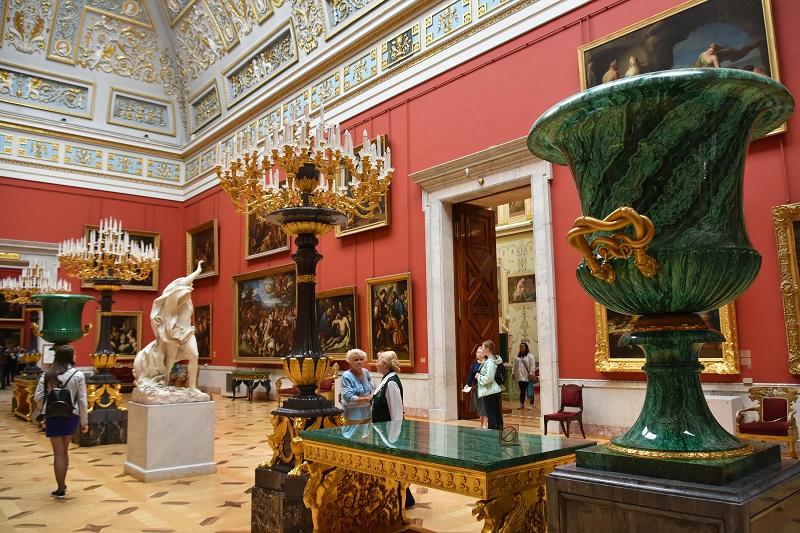
When visiting St. Petersburg for the first time, one cannot miss the grandeur of the Hermitage Museum, which is the city’s most renowned tourist attraction. Established by Empress Catherine the Great in the late 18th Century, the Hermitage Museum officially opened its doors in the mid-19th Century. Boasting a size second only to the Louvre in Paris, this majestic institution houses an astonishing collection of over 3 million artifacts.
Visitors can immerse themselves in centuries of European Fine art within the Hermitage’s walls. The museum proudly showcases Roman and Greek antiques, French neoclassical masterpieces, Flemish Baroque treasures, and a remarkable array of impressionist and post-impressionist art. Furthermore, it proudly hosts the world’s most extensive collection of paintings from various countries and periods, spanning centuries of artistic expression.
Peter and Paul fortress
Although lacking a military history, the Peter and Paul Fortress holds great significance in the annals of St. Petersburg. Legend has it that the city of Petersburg had humble beginnings within its walls. To truly grasp its historical importance, visiting the fortress is incomplete without exploring the grand St. Petersburg and Paul Cathedral and the various museums on the premises.
Notably, the fortress is the final resting place for most Romanov Emperors and Empresses. Fully immersing oneself in its offerings could easily consume an entire day. Nevertheless, if time is scarce, a visit to the cathedral and a stroll around the fortifications can be accomplished in just over an hour.
Peterhof Palace
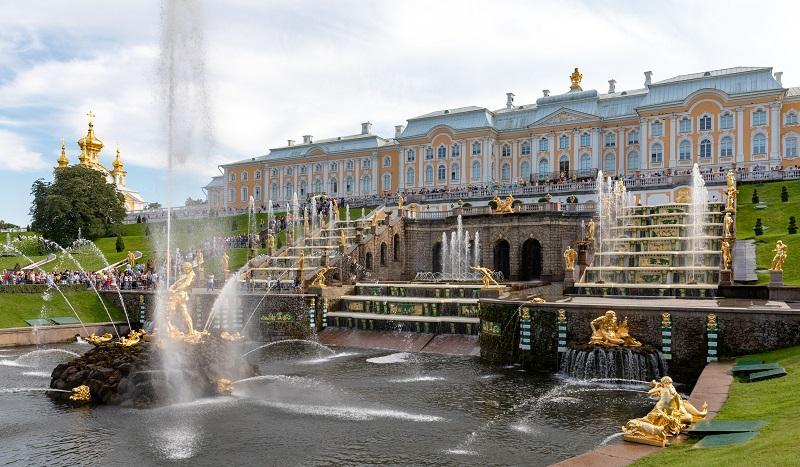
The Peterhof Palace is one of St. Peter’s unmatched marvels, serving as Peter the Great’s exquisite summer abode. The arduous quest for the perfect location consumed the emperor for more than ten years until the palace was finally realized. Within its grand walls, a captivating array of fountains awaits, their splendor truly coming to life during the enchanting summer.
Perched on a towering 16-meter bluff, which offers commanding views of Kotlin Island, known today as the Kronstadt naval base, Peter the Great handpicked this location in 1705 as a designated landing spot for ships embarking on his official voyages to Europe.
Back then, St. Petersburg had barely celebrated its second anniversary, with numerous buildings still in the early stages of construction, while the Great Northern War raged on against Sweden.
Following Peter’s triumphant defeat of King Charles of Sweden, he began constructing his summer retreat in the budding capital. In 1714, the foundation of his seasonal palace, known as “Monplaisir” or “My Pleasure,” was laid. Within 11 years, the earliest sections of the grand Peterhof palace took shape, standing as a testament to Peter’s vision and ambition.
Canals of St. Petersburg
Embark on a delightful journey through the canals of St. Petersburg by taking a boat. Initially constructed to prevent floods within the city, these canals now serve as a picturesque mode of transportation for tourists who revel in the magnificent cruises along the Neva River. Despite their transformation into a tourist attraction, the primary purpose of these canals remains to safeguard the city from the waters.
Among the favored waterways, the Griboyedov Canal stands out with its considerable length, offering splendid vistas of some of the city’s notable landmarks. Additionally, the Winter Canal provides the shortest route for navigation. Various boats catering to different preferences are available, offering packages that include food, live entertainment, and even English-guided tours.
St. Isaac’s Cathedral and Colonnade
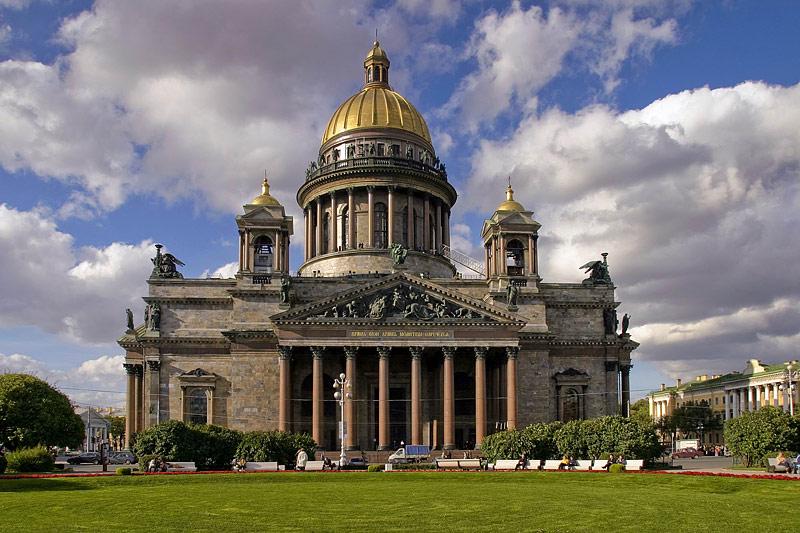
St. Isaac’s Cathedral and Colonnade presently serves as a museum, with infrequent religious services within its walls. However, it is the preeminent Orthodox basilica worldwide, bearing the name of Saint Isaac the Confessor, a Christian monk who established a monastery in Constantinople. This awe-inspiring cathedral underwent a construction period spanning 40 years, reaching its completion in the mid-19th Century.
Originally, St. Isaac’s Cathedral stood as the primary church in the city and held the title of Russia’s largest cathedral. Its construction, overseen by the architect Auguste Montferrand, a native of France, took place from 1818 to 1858. The cathedral aimed to become one of the most remarkable landmarks in the Russian Imperial capital.
Today, after 180 years, the gilded dome of St. Isaac’s Cathedral still commands the St. Petersburg skyline. While smaller than Moscow’s recently reconstructed Church of Christ the Savior, St. Isaac’s boasts exceptionally striking facades and interiors.
Eliseyev Emporium
In 1903, the Eliseyev Emporium was commissioned, marking the birth of an unparalleled symbol of opulence. While its glory days may have waned, the remarkable stained glass windows, meticulously hand-printed wall patterns, and exquisite Art Nouveau elements of the building continue to captivate.
Notably, it is the awe-inspiring window displays that truly catch one’s eye here. Serving as a retail destination with a culinary emphasis, the complex offers a delightful treat in the form of unique homemade ice cream. Additionally, visitors can acquire some truly exceptional souvenirs at this remarkable complex.
Vasilyevsky Island
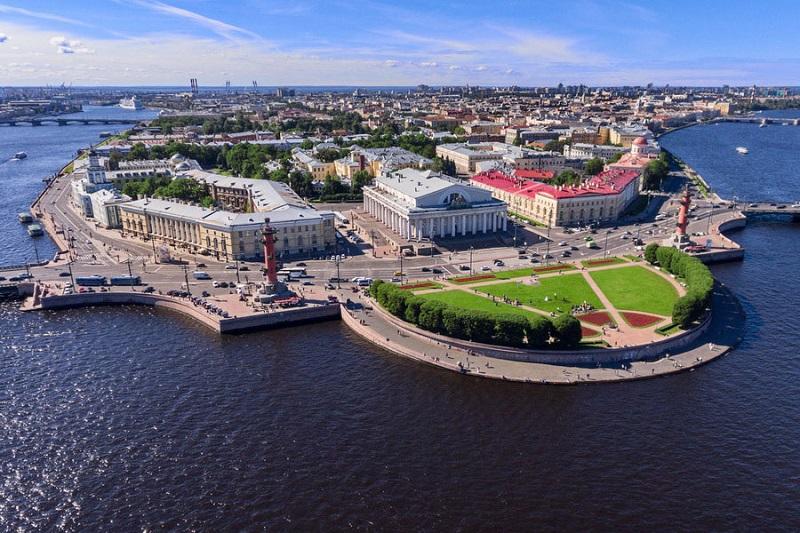
Vasilyevsky Island can be found on the opposite side of the river from the City center and Winter Palace in St. Petersburg. It is connected to the mainland through several bridges and a metro line. The island boasts numerous exquisite parks and houses some of the city’s notable landmarks.
Among these attractions are the Museum of Electrical Transport, the Old Saint Petersburg Stock Exchange, the charming Baroque Menshikoy Palace, and many others. For literature enthusiasts, a visit to the Institute of Russian Literature is highly recommended, where one can explore the original manuscripts of renowned Russian writers and poets such as Alexander Pushkin.
Conclusion
Visiting St. Petersburg is an experience that captivates and enchants travelers with its rich history, breathtaking architecture, and vibrant cultural scene. This magnificent city, often called the “Venice of the North,” offers a unique blend of imperial grandeur and modern flair.
From the iconic Hermitage Museum, housing a vast collection of world-class art, to the opulent palaces of the Russian tsars, such as the Peterhof Palace, St. Petersburg is a treasure trove of architectural marvels. Beyond its architectural splendors, St. Petersburg boasts a thriving arts and culture scene making it the ideal destination for first-time visitors to Russia.
